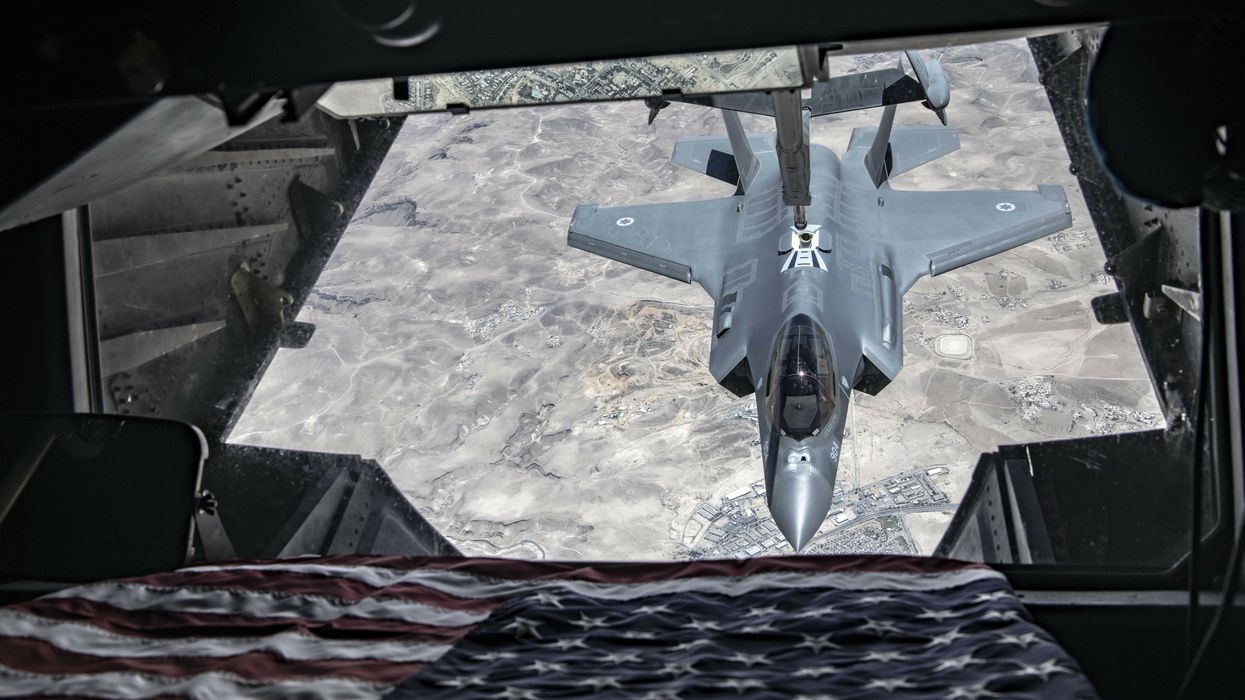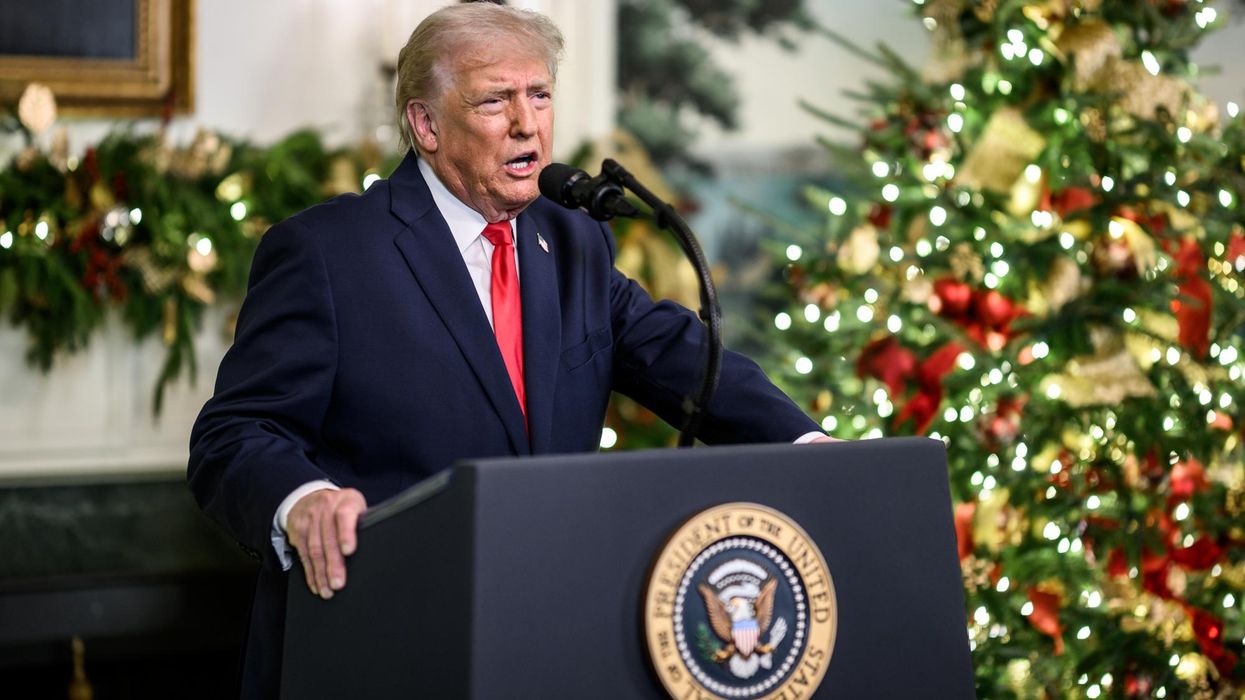Undaunted by the challenges posed by providing historic levels of aid to Ukraine while also supporting Israel’s campaign against Hamas, U.S. President Joe Biden defiantly declared recently on 60 Minutes: “We’re the United States of America for God’s sake, the most powerful nation in the history — not in the world, in the history of the world.”
True. But to pretend that U.S. capabilities aren’t being strained is to ignore reality. Forecasts of relative material capabilities point to a reality that will become even harsher. America’s relative geopolitical advantage is shrinking. As such, the affordability of maintaining U.S. dominance the world over will increasingly come into question.
Unfortunately, President Biden’s assertion is reflective of a broadly held attitude. Many in the U.S. national security community on both sides of the political aisle have beer money and champagne tastes.
More money, less relative advantage, more problems
To support the U.S. response to ongoing war efforts in Ukraine and Israel and to deter war with China, the White House recently made a $100 billiom supplemental budget request to Congress. That is on top of the Department of Defense’s proposed $842 billion budget for fiscal year 2024, inching ever closer to the $1 trillion threshold.
Meanwhile, Social Security spending is forecast to continue to increase as a percentage of GDP while revenues to pay for that spending will decline as a percentage of GDP. More broadly, the Congressional Budget Office’s long-term outlook involves deficit spending that steadily grows to 10 percent of GDP around mid-century. For many prominent U.S. policymakers, however, there seems to be little serious thought with regards to spending trade-offs.
Yet, at the height of World War II, U.S. defense spending as a percent of GDP was more than ten times what it is today. Why, then, should today’s U.S. policymakers make any national security-related trade-offs?
First, skyrocketing U.S. government debt appears unsustainable. But whether the U.S. government technically has the dollars to pay for all its present national security priorities ignores other important questions. To what extent and how quickly can U.S. dollars be converted into increasing quantities of arms, ammunition, and other resources — and do these purchases make strategic sense?
Hangover
The attitude of many of today’s U.S. national security analysts is a hangover from America’s “unipolar moment” following the collapse of the Soviet Union. For most of the two decades that followed, the U.S. faced few serious challengers at the nation-state level.
The U.S. still has an extraordinary amount of money to spend on munitions — but money does not equal munitions. Amid support for Ukraine, Israel, and Taiwan, the U.S. is facing tradeoffs about which munitions to provide to which parties and when.
Arms manufacturers are rushing to meet present shortfalls, but meaningful increases in production capacity will take time. Meanwhile, a replenishment of U.S. military stockpiles will come at the cost of other priorities — the unforgiving “guns versus butter” logic made famous by President Dwight Eisenhower. It is a logic that offers no easy answers, where, for example, the recent $6.2 billion “accounting error” for military aid to Ukraine would have instead been enough to house the entire U.S. homeless population for a year.
Such tradeoffs will become increasingly stark in the coming decades. While absolute U.S. resources will grow considerably, absolute resources for the rest of the world combined are forecast to grow more quickly. Even if China does not surpass the U.S. in terms of GDP at market exchange rates, the gap between the size of the two economies will likely continue to close. India will see considerable growth. Nigeria, too, possesses awesome growth potential. These and other less developed countries are expected to take a larger share of the global economic pie, a measure which has historically coincided with increasing geopolitical assertiveness.
The U.S. military will likely continue to be an 800 pound gorilla for many decades. But it will no longer be able to dominate the lot of four- and five-hundred pound gorillas soon to populate the international system.
This reality could change if Congress continues to spend more on defense, as some advocate. But spending more instead of spending better may lead down a dark path. At the extremes, do we want the U.S. to adopt the modus operandi of the Soviet Union as once described by Prime Minister Margaret Thatcher? “They put guns before butter, while we put just about everything before guns.”
Making better choices
This is not to say that the U.S. should cease support for Ukraine, or Israel, or Taiwan. President Biden has made a reasonable case for why the success of each is vital to U.S. national security.
But the present strains on U.S. industrial capacity and debt burdens foreshadow more severe strains to come. A few solutions present themselves: 1) Pursue a course of increased militarization at the expense of domestic welfare projects or ballooning deficits; 2) Downgrade some national security priorities; or 3) Lean more on partners and allies. (Significantly raising taxes is a fourth, but that political third rail hardly feels worth discussing with a Republican-led U.S. House of Representatives, it being the run-up to an election year, and the long history of American society’s resistance against increasing taxes.)
By leaning more on partners and allies, U.S. policymakers will have to accept that such a passing of the baton will involve occasional drops. Berlin has repeatedly backtracked on commitments to substantially plus-up its defense. But Germany’s ability to commit substantially more resources to defense — perhaps an action that its leaders will only take when forced — is not in question.
The elimination of several military research and development and procurement programs with weak justification would also cut costs. How necessary are hypersonic missiles in a world where the most advanced ballistic missile systems struggle to intercept Cold War-era intercontinental ballistic missiles? Much was made of China’s development of a fractional orbital bombardment system (FOBS) in 2021. It is a terrifying capability, and also one that uses Soviet-era technology. New hypersonic technology isn’t needed to pose a similar threat to U.S. adversaries, and new U.S. hypersonic capability is unlikely to resolve China’s FOBS threat or threats from more advanced hypersonic weapons. So why continue to pursue hypersonics?
Nuclear modernization also deserves interrogation. Some upgrades — such as improved arming, fuzing and firing systems, which help ensure that warheads detonate at the exact point and time designated and only when properly authorized — are clearly beneficial. In contrast, fielding of nuclear sea-launched cruise missiles, for example, would be escalatory and fill no clear strategic purpose. In the event of an adversary’s use of tactical nuclear weapons, other less escalatory and arguably more preferable options are available.
Yet, making cuts to these and other programs and platforms would likely only shrink the military’s budget by a few percent each year. To be successful, such cuts will need to be part of a fundamentally less martial U.S. grand strategy.
After generations of a largely U.S.-led global order, it is natural that many in the U.S. national security community would want to continue to dominate the global environment. They want a refill of their champagne. However, due to declining relative U.S. advantages, the most they can reasonably afford is the champagne of beers.
















